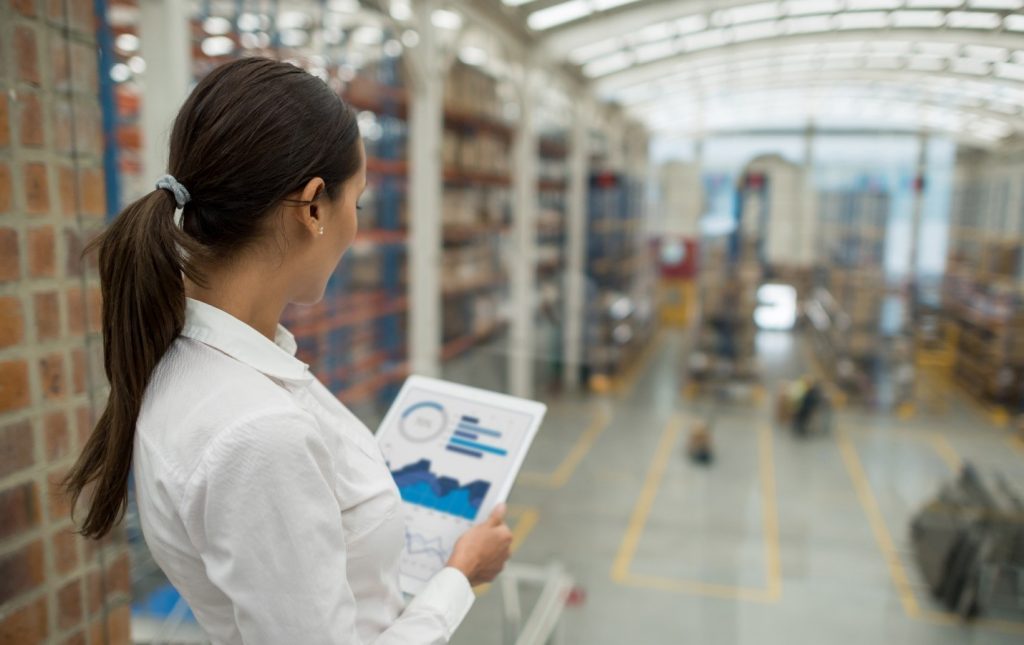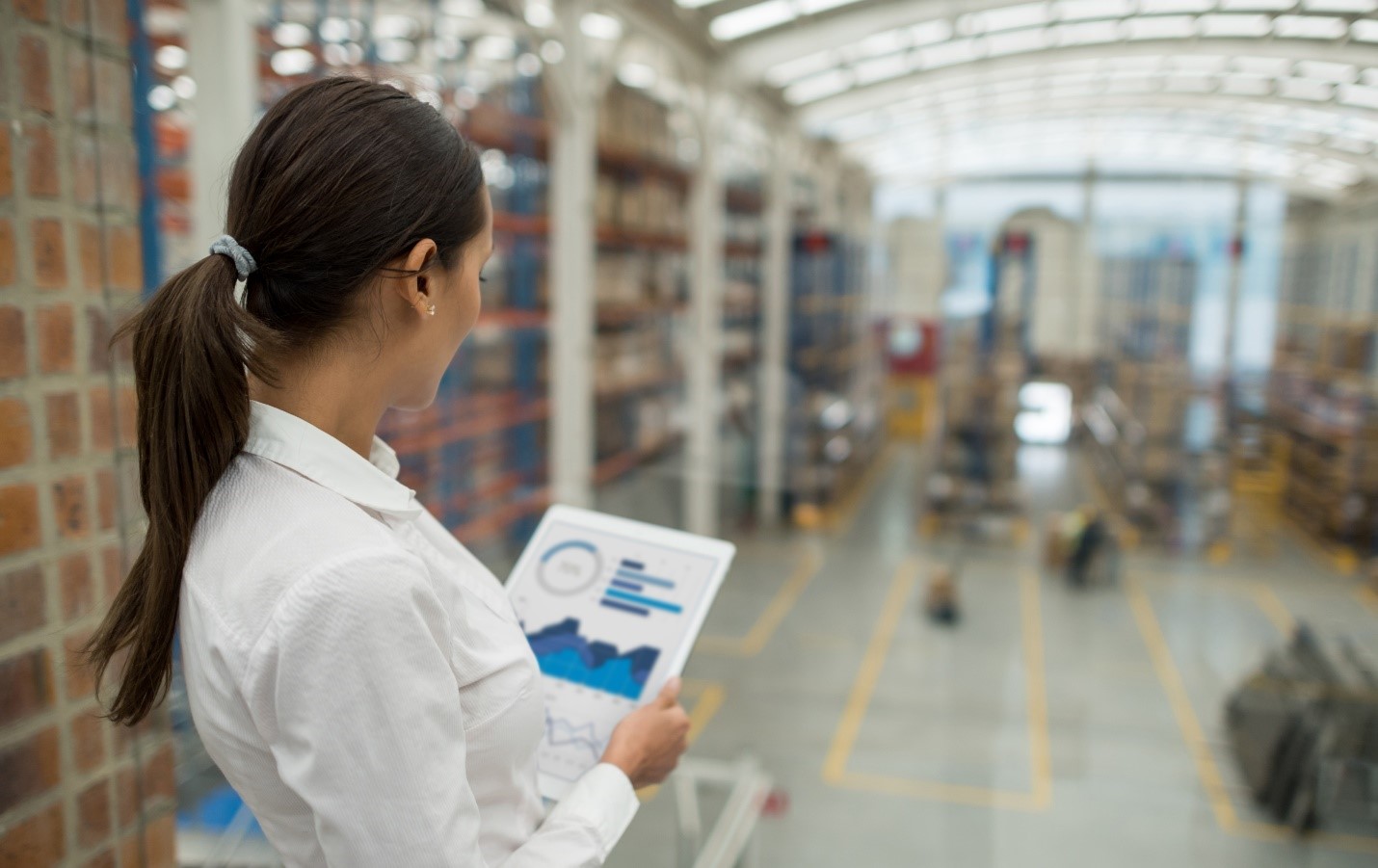
The real-time difference: How IoT is poised to transform your inventory management system

Constantly shifting consumer preferences demand that retailers and consumer packaged goods (CPG) companies become agile. This means making ongoing decisions regarding stock, inventory, and production changes quickly and in an informed way. Today, robust inventory optimization solutions help retailers make these decisions with SKU-by-SKU sales data and recommendations surfaced at the store level. This gives companies visibility each week into which stores or outlets are struggling, which SKUs are performing, and which are dead weight.
The latest solutions for inventory optimization are primed to take those insights even further, utilizing the Internet of Things (IoT). IoT integration into inventory optimization solutions promises significant benefits to retailers and CPG companies. As these solutions evolve, capturing real-time data in-store will help to automate planning, create more accurate forecasts, and enable retailers and CPG firms to go beyond retrospective data analytics.
Neal Analytics, a leading Microsoft partner, is constantly looking to the future with its inventory optimization solution. The forthcoming IoT capabilities of the Neal Analytics Inventory Optimization solution, built on Microsoft Cloud technology, combine revenue gains from more accurate forecasting with a real-time understanding of market preferences and the productivity boost of automated processes. Inventory Optimization is a part of Microsoft’s cloud solution portfolio for the retail and CPG industries and is available on Microsoft AppSource.
IoT revolutionizes how retailers and CPG companies capture data insights
Smart coolers, shelves, and racks are transforming the way retailers and CPG companies think about collecting data for their stores. Insight into the latest sales and inventory data helps businesses increase agility, enabling them to make decisions faster and adjustments in their supply chain right away. IoT technologies such as connected cameras and sensors built into shelves enable companies to see who their customers are and what products they respond to. These devices can deliver near-real-time data directly to back offices, maximizing share of shelf and tracking product stock. Sensors send alerts when items are out of stock and when the mix of products on a shelf or rack changes — a critical capability, as overstocks and out-of-stocks cost retailers $1.1 trillion globally every year.[i]
These racks and coolers can also assist with planogram compliance. Cameras by machines will have the ability to snap a display photo and upload it to the cloud, where intelligent recognition compares it to the planogram. Inventory optimization solutions can then provide actionable reports on planogram compliance and sales data within minutes. Reps can use these insights during store visits to make sure they are recommending the right SKUs and products to their customers at any given moment. Having this on-hand inventory data has been shown to help improve sales by 10 percent.[ii]
With IoT capabilities, retailers and CPG firms can gather data more quickly and accurately than ever before, enabling faster action when and where it’s most needed.
A wealth of IoT data helps retailers and consumer goods companies improve and automate their processes
The constant stream of data from IoT devices back to retailers and consumer goods companies makes it possible to uncover new operational insights. Inventory optimization solutions can take the vast amounts of data received and analyze it to produce actionable information, with SKU-by-SKU and store-by-store breakdowns. These detailed insights enable organizations to plan better, automate tasks, and be smarter about their use of employee time.
With IoT, inventory assessment for stores across an organization can become automatic and happen much more frequently. Currently, most retailers only conduct full stock counting once a year — and those counts are off on average by 25 percent.[iii] An IoT-enabled inventory optimization solution can shift the assessment cadence to weekly or even daily.
The immediacy of inventory data with IoT allows for retailers and CPG organizations to make rapid decisions regarding planning and inventory changes. For instance, using IoT data, an inventory optimization solution can take out-of-stock alerts from a specific cooler, pinpoint the store, and automatically add that store to the daily route of a field seller so they can address the issue. Companies can automatically set up and shift forecasts based on current and historical product performance, as well as third-party data. They can then alter production calendars based on the most up-to-date forecasts and trends, ensuring maximized production efficiency.
Retailers can also use IoT data to automate in-store ordering. Field sellers can make order recommendations based on SKU data and previous purchase history, and then automatically sync those orders to customer profiles in a CRM system.
Check out the following resources to learn more:
- Try Neal Analytics Inventory Optimization today on Microsoft AppSource.
- Read more about how to go beyond retrospective data analytics.
- Learn how IoT and data collection can improve retail execution.
- See Microsoft’s cloud solution portfolio for the retail and CPG industries, including AFS Retail Execution, AFS POP Retail Execution, Plexure Retail Personalization, and Dynamics 365.




